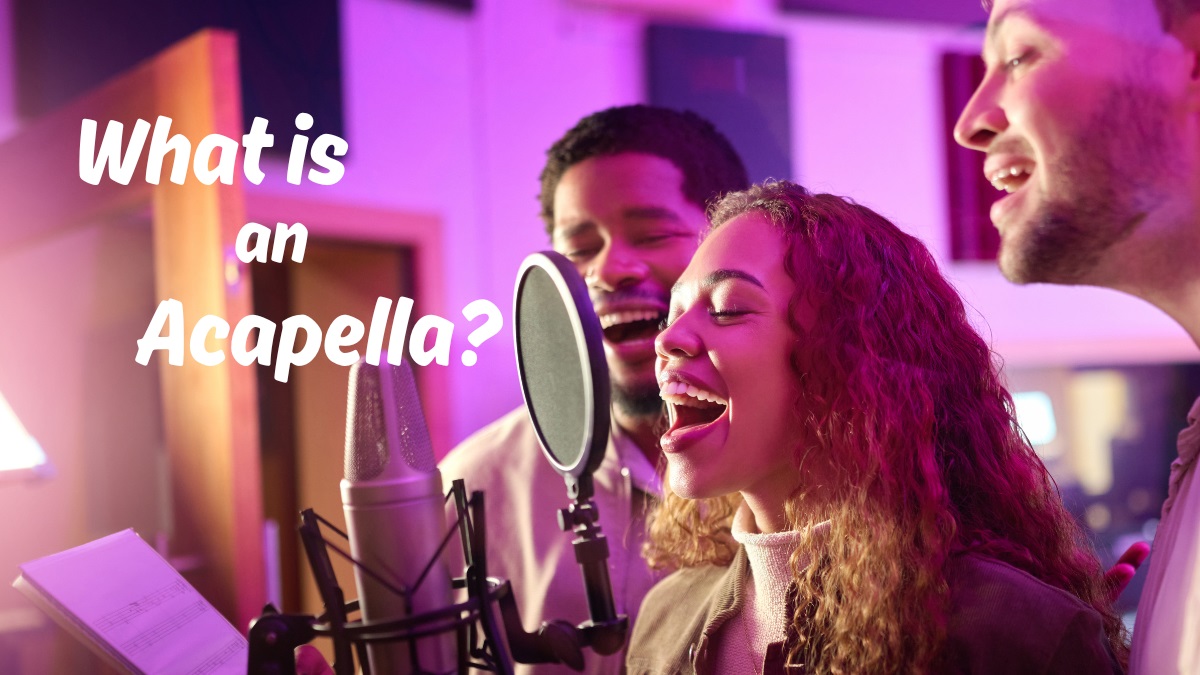How cool were all the performances in ‘Pitch Perfect’?
If you’re a fan of the popular movie trilogy, then you probably know it was all about acapella, and man, did it sound amazing to hear them! Not to mention, so incredibly entertaining!
The TV show ‘Glee’ is also one of the most popular musical productions that brought back acapella into the spotlight and the hearts of millions of people.
It’s truly awesome the extent of what a human mouth and vocal cords can do.
I recently got into a discussion with a friend of mine over the use of backing music with acapella and whether it still makes the show a legit acapella performance.
This had me wondering — how much do people really know about acapella?
Today, I’ll be answering the question “what is an acapella?” as I explain the fundamentals of the music style, its history, and examples.
I’ll also be explaining why it’s a good idea to sing acapella and the challenges that you may come across along the way.
What Is an Acapella?
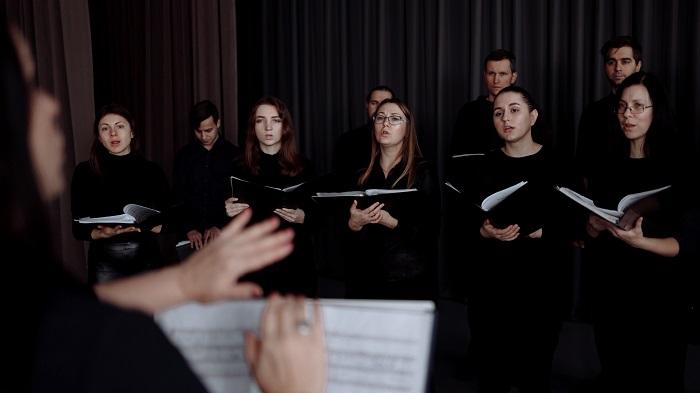
In music, acapella is a form of signing that uses nothing but the human voice to produce the sounds involved.
This means that for a performance to be called acapella, it has to be entirely based on the natural human voice without incorporating instruments or backing music.
Sometimes clapping of the hands or snapping of the fingers is added, which is acceptable.
Acapella music is usually performed by a group, but it can also be done as a solo.
What Does Acapella Mean?
In the music world, acapella singing refers to a genre of music that uses no instruments or backing track to produce music — just the natural human voice.
While acapella may have started with a focus on imitating the sounds of instruments, it soon became mainly about harmonizing songs and holding a pitch.
Singing acapella or even just listening to it is a unique experience that can leave you in awe.
The fact that the human voice isn’t limited by the traditions of singing a certain style, matching the melody of a mechanical instrument, or sticking to a mainstream taste, makes vocal music as flexible as a genre can ever be.
Perhaps it’s this freedom that was behind the appearance of barbershop music in the United States. This form of acapella music is the only one that’s completely USA-made.

Acapella music was called that because chapels and small places of worship were the first sites where people started to sing without being accompanied by the playing of instruments.
This was unlike choirs in large churches where a piano or an organ was always present.
Over time, the term acapella evolved to mean any type of singing music that doesn’t involve the use of instruments or backing music.
Nowadays, it doesn’t matter whether the lyrics were religious or not, it was acapella as long as it was all human.
As I mentioned earlier, acapella music can be performed by any number of artists, from solo acts to groups with more than a dozen members.
Acapella vs A Capella vs A Cappella
When it comes to language, the word “acapella” is Italian in origin and literally translates into “in the style of the chapel”.
In the United States, it’s commonly spelled and written as one word “acapella”, but that’s not quite right.
Technically speaking, the correct way to write acapella is in the form of 2 words “a capella” or ”a cappella”. The one with the double ‘p’ is the traditional Italian spelling while the one with the single ‘p’ is the Latin spelling.
In any case, you can probably use any of the 3 words and everyone will still know what you’re talking about. However, the Italian version is the typical go-to in musical terminology.
Grammar-wise, you can use the word ‘acapella’ (or ‘a capella’ or ‘a cappella’) to describe a noun or an action. For example, a band or a song can be acapella and an artist can be performing acapella.
Examples of Acapella Music

Other than songs from the Pitch Perfect trilogy and Glee, the following are some examples of acapella music and artists that’ll simply blow your mind away!
- Sound of Silence by Pentatonix
- Agnus Dei by Samuel Barber
- Just Called To Say I Love You by Pentatonix
- Daft Punk Medley by Pentatonix
- Dance of the Sugar Plum Fairy by Pentatonix
- Es Ist Ein Ros Entsprungenby Michael Praetorius
- Hallelujah by Pentatonix
- Can’t Help Falling in Love by Voiceplay
- Just Singby Voiceplay
- Disney Princess Medley by Voctave
- Somewhere over the Rainbow by Voctave
- Moon River by Voctave
- When a Man Loves a Womanby Home Free
- Only in America by Home Free
- Workin’ for a Livin’ by Home Free
- Sea Shanty Medley by Home Free
- The Christmas Can-Canby Straight No Chaser
- 12 Days Of Christmas by Straight No Chaser
History of Acapella Music
Some would say that acapella music is as old as humanity itself since it’s the sounds produced by the human voice without any instruments or backing tracks.
While the idea of cavemen being acapella singers is pretty amusing, the origin of acapella as we know it today dates back to the 15th and 16th centuries.
It was during that period that singing in chapels and small worship places became a thing across Europe.
This brought about the Italian term “a capella” and by the 17th century, acapella songs evolved to being divided into parts for specific voice types.
How to Get Into Acapella
If you’re thinking about getting into acapella so you can start sounding as awesome as they do in all those groups and movies, you should know 2 things:
- Firstly, the route to mastering acapella needs a lot of patience and determination — it isn’t something you can just get up and do.
- Secondly, there are several ways you can try to learn acapella singing techniques and they don’t necessarily cost much!
I know it’s a “bad news mixed with good news” situation here, but it’s so worth it if you stick to the process.
That said, you can seek the services of a vocal coach to give you private lessons in acapella singing, or they can include you in a group if you prefer.
Alternatively, you can try working on your own with the help of online videos or apps that teach acapella.
Techniques to learn
Regardless of the learning approach you decide on, there are a few techniques you’ll need to get familiar with and master to become an acapella singer. They go as follows:
1. Holding a Pitch
First things first, you should learn how to find your pitch and keep it throughout your section.
This may sound simple to do, but when you add the factor that no instruments or backing music are accompanying you, it’s understandable why holding a pitch in acapella is more difficult.

Not to mention, you’ll need to stay on your note while others around you sing different pitches — yes, it’s surely a challenge.
A technique that I found to be helpful for those learning acapella and trying to become pitch-perfect is using a recorder.
You can record your singing on your smartphone, laptop, or any other device and then listen to it when you’re done to understand what you’re doing right and what you need to work on.
Needless to say, your voice should be recorded without any other music playing in the background.
2. Harmonizing melodies
As soon as you start making progress in keeping your pitch during singing, you can incorporate learning how to harmonize your voice to different melodies.
You see, every song has a certain melody. There can even be different versions of the same song in different melodies.
To sound as flawless as possible when singing any song acapella, you have to harmonize your voice to its melody.
So, what you should do is study the melody of a song, try to harmonize to that song, record your singing without music, and then play it back while playing the song in the same melody you set out to follow.
You’ll know you’re doing a good job if you sound just like the song, or close to how it sounds.
There shouldn’t be a clash between your vocal’s harmony and the song’s tune; they should melt into each other or so to speak.
Complementing the song’s melody with your singing harmony is the main goal of this technique.
3. Obtaining a decent range
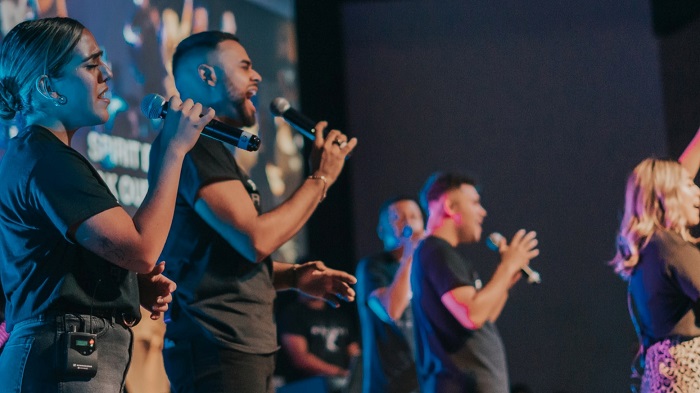
If you’ve ever witnessed an acapella group in action, you’ve probably got the idea that each member has a certain range in their voice.
Acapella groups typically include a high soprano part, a bass part, an alto part, and a falsetto part. If you want to join a group yourself, you’ll need to join one of these sections.
If you can sing particularly low or high, chances are your audition will go well.
That said, if you’re looking for some tips to help you extend and improve your range like a good vocalist should, I can safely say it’s possible. Your range isn’t set in stone, it can change if you train it to.
The following exercises can help you on your mission:
- Keep a proper posture while singing. You need your feet to be shoulder-width apart, your back straight, and your chest lifted.
- Not only should your body be in a correct posture, but also your breathing needs to follow a proper technique as well. Always draw breath using your diaphragm to produce enough pressure to achieve higher notes.
- Nailing higher notes is easier when you don’t have a lot of tension residing in your vocals. You can let go of a good chunk of this tension by relaxing the muscles of your jaw as your singing escalates.
- As mentioned in the previous tip, reducing tension while singing is an effective way to achieve higher notes. Other than your jaw, your tongue could also be holding tension, which makes your larynx go up and tighten your vocal folds.

This usually causes breaks in the voice, interrupting your ascent in notes. So, try to relax your tongue and larynx while singing to better sustain your breath and reach a higher note.
- Try lip trills by blowing air while your lips are slightly closed to create a steady flopping action. During the flopping, sing ‘u’ as in ‘umbrella’ in different pitches.
- Do vocal sirens by singing ‘e’ or ‘o’ from your lowest possible note to your highest possible then back down — just like a police or ambulance siren sound!
4. Knowing how to adjust arrangements
Last but not least, this particular technique is essential whether you’ll be singing solo or in a group. Knowing how to create and adjust arrangements is the only way you can put on a coherent show.
It prevents you from sounding like you’re randomly chanting and keeps members of the acapella group from clashing harmonies or singing outside of their parts.
Of course, if you’re a solo act, working on arrangements is so much easier than when in a group.
With no voice to consider but your own, you can divide songs into arrangements that best suit the type of your voice (soprano, tenor, contralto, and so on).
On the other side, working with an acapella group means more voice types to think about and more effort into dividing arrangements that best suit each one.
Advantages of Acapella Music
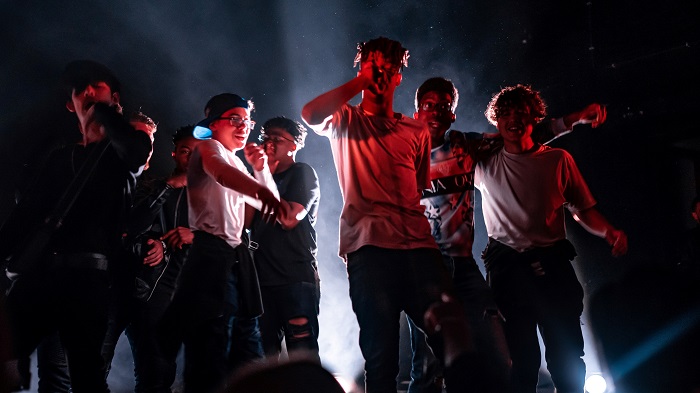
Getting into acapella music comes with many benefits to the artist. Below are some of the advantages I believe to be most unique to singing acapella:
Gives You Great Flexibility
One of the best things about acapella music is how versatile it can be. It’s not restricted by style traditions or specific genres — you can sing anything acapella, classic to modern.
For the artist, this gives them the space they need to get creative and practice sounds beyond their comfort zone. In the end, this boosts their level and makes their skills more inclusive.
The flexibility effect of acapella on songs is also evident to listeners as it’s common for an acapella cover to totally change the way a song is received.
A slow song can be made more fun and energetic or the other way around.
Introduces New Musical Skills
If you’re a singer who is just getting started with acapella, you’re in for a treat when it comes to building your musical and vocal skills.
Since this type of music involves singers creating different sound effects using nothing but their voices and bodies, it’s not hard to imagine the development you’d be putting your vocals through as you learn to imitate various instruments.
Just watching acapella singers and bands in action can be a real eye-opening experience to the extent of the capabilities of the human voice.

It makes you positive that these artists must be highly skilled to be able to produce the sounds you’re hearing without external help.
Yes, it definitely takes a serious amount of practice to reach such a level, but I’d say it’s super rewarding when you get there.
Promotes Musical Independence
Singing acapella music is the perfect way to gain some musical independence if you need to work on that. The reason for this is that acapella requires you to use your ear to pick up and judge different notes and pitches.
Even if you’re singing with a group, you’ll need to pay attention to your own singing to ensure that the overall performance goes as planned.
Encourages Musical Teamwork
While acapella promotes musical independence, it also encourages cooperation and teamwork when working within a group.
Before you think I’m contradicting myself, just consider it for a minute. When you’re doing an activity with a team, it’s not only your skills that matter, but also the skills of the team as a unit.
For example, if you’re playing Call of Duty or some other co-op game with other people on your team, you need to be aware of your teammates’ moves and stats to perform as best as possible as a unit.
You rely on each other to win, so it’s a collective effort made up of individual efforts.
The same concept applies to sports and music. Your acapella group is your team that you need to communicate with and support to deliver a winning performance.
Provides Excellent Ear Training
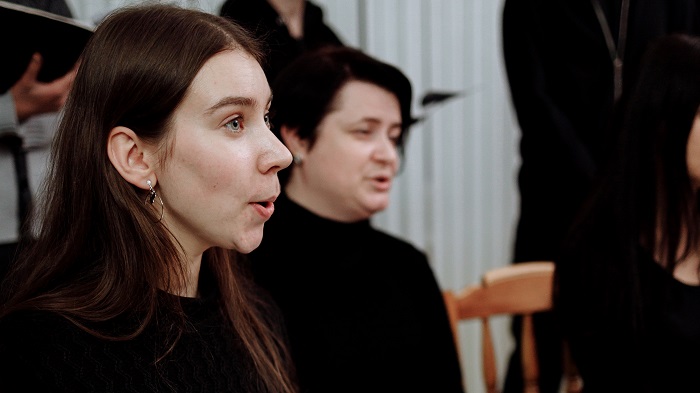
Last but not least, acapella music offers an excellent chance to train your ear.
Once again, since there are no instruments or backing music involved, acapella singers need to completely depend on their ears to detect different notes, pitches, and melodies.
As such, getting into acapella can help you sharpen your listening skills to reach levels you didn’t know existed. You’ll be able to easily tell if you’re off-key or if you’re in tune with the song’s harmony.
What’s more, acapella can help you build better muscle memory when it comes to finding notes since you’ll be required to do it all the time on your own.
It’ll become something you can do by heart, not by adjusting strings or keys.
